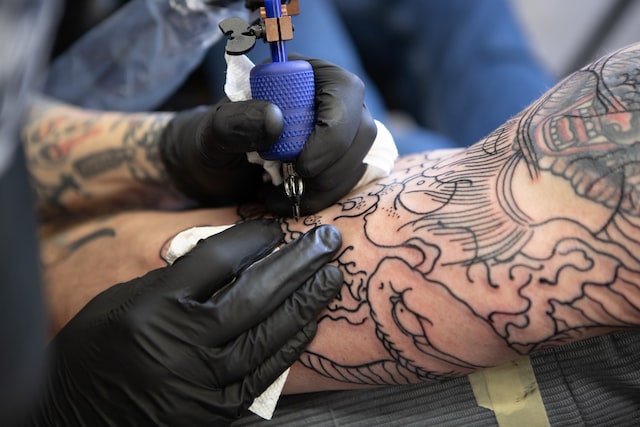If you’re considering getting your first tattoo, you’ll want to know everything about tattoo outlines. Not only will it help you understand how the process works, but it’ll also help you avoid any potential regrets down the road!
Choosing the right design and placement is critical whether you’re going for something playful or meaningful. After all, you’ll have it on your skin for the rest of your life.
Stencil Care
Stencils are used on tattoo outlines to create crisp, clean lines. However, over time the paint can build up inside the stencil’s little crevices and corners, making it harder to keep the design crisp.
It is why it’s essential to take good care of your stencils! Make sure you store them flat to avoid bending, twisting, or wringing and be gentle when handling them.
It’s also a good idea to clean your stencils often. It is because paint tends to build up in the small details of a stencil’s design and can be hard to get off later.
For water-based paints like emulsion and acrylic, you can quickly remove any excess paint by soaking the stencil in warm soapy water for a few minutes. You’ll need to use an appropriate cleaner for solvent-based paints, but for most latex, you can soak it in warm water.
How to Draw the Design
A tattoo is a permanent commitment, so the design on your skin must be accurate and perfect. To achieve this, a stencil is essential.
A stencil can be made from hectograph transfer paper or machine-printed thermographic paper. Both methods are safe and reliable for transferring the design to the skin.
Alternatively, you can use a skin scribe or hectographic surgical pencil to draw the design directly on the skin. Both tools should be sanitized before use.
The design on a tattoo outline should be bold and clear enough for tracing or wax paper to see easily. You can also practice freehand sketching the design until it is perfect.
Once satisfied with the design, place it over a sheet of tracing paper and tape both down securely. Once you have done this, peel the paper away and check that your design is fully transferred to the skin. If not, repeat the process and try again.
Stencil Transfer Solution
A stencil transfer is a semi-permanent tattoo outline the client can look at for reference. It’s an essential step in the tattooing process, and it can make it easier for the client to see what they want on their skin.
First, a tattoo artist will use a stencil to prepare the client’s skin. It is done for sanitary reasons and to ensure that the tattoo is as effective as possible.
After preparing the skin, the stencil is applied and left to dry. It is done so that the stencil stays in place and doesn’t slick and smooth surfacing process.
Using the suitable stencil transfer gel ensures that the tattoo outlines stay in place until the client’s skin is fully healed. It can also help keep the lines clean and sharp, allowing the ink to show up clearly.
Stencil Placement
Whether you are an amateur or an expert stenciler, getting the correct placement is crucial to creating a perfect tattoo. The wrong placement can make a design look stretched, compressed, or off-centre.
To ensure a crisp transfer, follow these simple tattoo stencil tips and tricks to help get the job done right.
Use painter’s tape or re-positionable spray adhesive to secure your stencil.
Although the re-positionable adhesive is messy, it can help slick and smooth surfaces, like ceilings or curved walls. It can also help prevent paint from seeping under the edges of your stencil.
